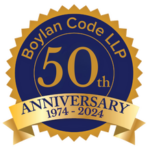 The Treasury Department recently released proposed regulations to better explain a portion of the new Federal tax code that applies to pass-through entities. Before exploring the content of selected portions of the proposed regulations, it is important to understand the underlying law that the regulations purport to clarify.
The Treasury Department recently released proposed regulations to better explain a portion of the new Federal tax code that applies to pass-through entities. Before exploring the content of selected portions of the proposed regulations, it is important to understand the underlying law that the regulations purport to clarify.
On December 22, 2017, Congress passed a sweeping overhaul of the Federal tax code entitled The Tax Cuts and Jobs Act (the “Act”). As part of this overhaul, corporate tax rates were cut dramatically from a top statutory rate of 35% to a flat rate of 21%. The corporate tax rate is only paid by C-corporations and does not affect pass-through entities such as sole proprietorships, partnerships, LLCs, and S-corporations. But according to the Brookings Institution, 95% of the over 26 million businesses in the United States of America in 2014 were pass-through entities. The earnings of a pass-through entity flow through the entity and are reported directly on the individual taxpayer’s tax return and taxed at the individual’s tax rate. C-corporations, on the other hand, are subject to what is often referred to as a double tax. The corporation pays taxes at the entity level and the shareholder is taxed on any disbursements, in the form of dividends, at the individual level.
This shift in entity selection is particularly relevant when legislators are drafting tax laws intended to reduce the tax burden on what is broadly referred to as “business.” The much-publicized decrease in the corporate tax rate did nothing to change the tax liability of 95% of American businesses—nor was it intended to. In what was likely an effort to mirror the tax cuts being given to C-corporations, the Act provided for a 20% deduction on qualifying earnings of a pass-through entity (codified in 26 U.S.C. § 199A). As is always the case in taxes, we must begin by defining a few terms.
The Act extends to taxpayers other than corporations a deduction up to 20% of the taxpayer’s “qualified business income” (“QBI”) earned in a “qualified trade or business.” To determine the amount of deduction for taxpayers in excess of statutorily defined Threshold Amounts (defined below), the taxpayer must calculate: (1) 50% of allocable W-2 wages; and (2) 25% of allocable W-2 wages plus 2.5% of the unadjusted basis immediately after acquisition of all qualified property. The taxpayer then must take the greater of those two numbers and compare that to 20% of QBI. Whichever is less is the deduction amount to which the taxpayer is entitled.
A qualified trade or business, as defined in 26 U.S.C. § 199A(d), is any trade or business except: (1) a specified service trade or business—yes, that is another definition—or, (2) the trade or business of performing service as an employee. The second prohibition simply prevents an employee, rather than owner, from claiming this deduction. The first exclusion on “specified service trade or business” (“SSTB”) caps the deduction that an owner may take if the entity is engaged in health, law, accounting, actuarial science, performing arts, consulting, athletics, financial services, brokerage services, or any business in which the principal asset is the reputation of any one or more of its owners or employees. Notably, the Act carved out exceptions to the income cap limitation to businesses in engineering and architecture. There is good news for SSTBs. Section 199(A)(d)(3) states that any SSTB that has taxable income less than $315,000 if married filing jointly and $157,500 for all other taxpayers, (“Threshold Amounts”) shall be treated as a qualified trade or business and qualify for the full 20% deduction. SSTBs earning up to $415,000 if married filing jointly ($207,500 for all others) may take the deduction with the W-2 limitations enumerated in Section 199(A)(b)(2) and discussed above.
Four important points were clarified in the proposed regulations: (1) De minimis exception; (2) clarification of reputation or skill catch all; (3) conversion of employee to independent contractor; and (4) cracking. I will discuss each in turn.
De Minimis Exception
The proposed regulations clarified the very foreseeable situation in which a business sells products and engages in services. Regulation Section 1.199A-5(c) provides a de minimis exception allowing a trade or business with annual gross receipts of $25 million or less and receiving less than 10% of gross receipts from performance of one of the services in the disqualified fields to avoid being treated as an SSTB. The same rule exists for companies with gross receipts in excess of $25 million, but in that case gross receipts for performance of services within a disqualified field must account for less than 5% of gross receipts of the company to avoid treatment as an SSTB.
Reputation or Skill
One major area of clarification in the proposed regulations was how expansively to read the broad language relating to businesses where the principal asset is the reputation or skill of any one or more of its employees or owners. This catch all provision had the possibility of being broadly interpreted and thus widely applicable; fortunately, however, the proposed regulations offer a very narrow reading. The catch all will only apply to—and therefore disqualify from eligibility, subject to Threshold Amounts—those trades or businesses in which: (1) compensation is received for endorsing a product or service; (2) compensation is received for licensing the use of an individual’s image, likeness, name, signature, voice, trademark, or any other symbol associated with the person; or (3) compensation is received for appearing at an event, on television, radio, or other media format.
This means that a celebrity that owns a business cannot take a deduction on an endorsement, personal licensing, or appearances, but her otherwise qualified trade or business is eligible for the 20% deduction, regardless of the fact that it is the celebrity’s reputation that draws clients and drives revenue.
Employees
The Act makes it very clear that employees are not eligible for the deduction. Law firms provide a good example: a law firm’s equity partner, as an owner of the firm, qualifies for the 20% deduction (subject to Threshold Amounts), but the associate attorney, as an employee, does not. When the Act was released this was an area that many thought would be ripe for strategic planning. For example, what if the associate attorney left the law firm, opened his own, and was then contracted by his old law firm in the same work? In that case, the IRS will still classify the associate as an employee. So long as the employee is engaged in providing substantially the same services to the same employer, the IRS will treat the person as an employee. If, however, that same associate left and became an independent contractor performing the exact same work but for another employer, this would be acceptable, and he would qualify for the 20% deduction.
Cracking
Those who are unfortunate enough to fall within the disfavored categories have sought strategic ways to reap the benefits of the deduction. One way that they have sought to do so is by stripping income out of disqualified SSTBs and moving it to qualifying businesses—a practice referred to as “cracking.” It was thought that a doctor could sell the building that contained his practice to an LLC and that LLC could rent the building back to the doctor. This would remove profit from the disfavored business (health) and place it in a favored business (real estate) that qualifies for the pass-through deduction.
Unsurprisingly, the Treasury anticipated cracking and imposed certain limitations. The proposed regulations severely limit, but do not totally eliminate, the potential for cracking. Under the proposed regulations, an otherwise qualified trade or business will be considered an SSTB (and therefore not eligible for the 20% deduction) if that trade or business provides 80% or more of its services or its property to an SSTB with which the qualified trade or business shares 50% or more common ownership. That means that the LLC created by the doctor to purchase his building and rent it back to his practice would be treated as an SSTB and not qualify for the 20% deduction. All of the hypothetical LLC’s income would be derived from the doctor, and the doctor’s practice and the LLC would share 100% common ownership.
It would not be impossible for a dedicated SSTB to find non-prohibited workarounds that would allow profits to be stripped and moved to a qualifying entity. However, such an arrangement will take considerably more work than originally anticipated and most likely involve partnering with other SSTBs to come in under the percentage business and ownership caps discussed above.
Conclusion
For many pass-through entity owners, the Act has provided a significant deduction to mirror that given to C-corporations. The proposed regulations have offered clarity on some of the major questions held by tax practitioners in law and accounting. Even if an entity is engaged in one of the disfavored categories of business, there is still a strong possibility that due to income or strategic planning that the Section 199A deduction may still apply. Every pass-through entity should analyze their Section 199A qualification and plan to take full advantage of this new deduction.
Austin Judkins is an Associate in Boylan Code’s Business and Corporate Finance Group concentrating in entity selection and formation and business transactions.


